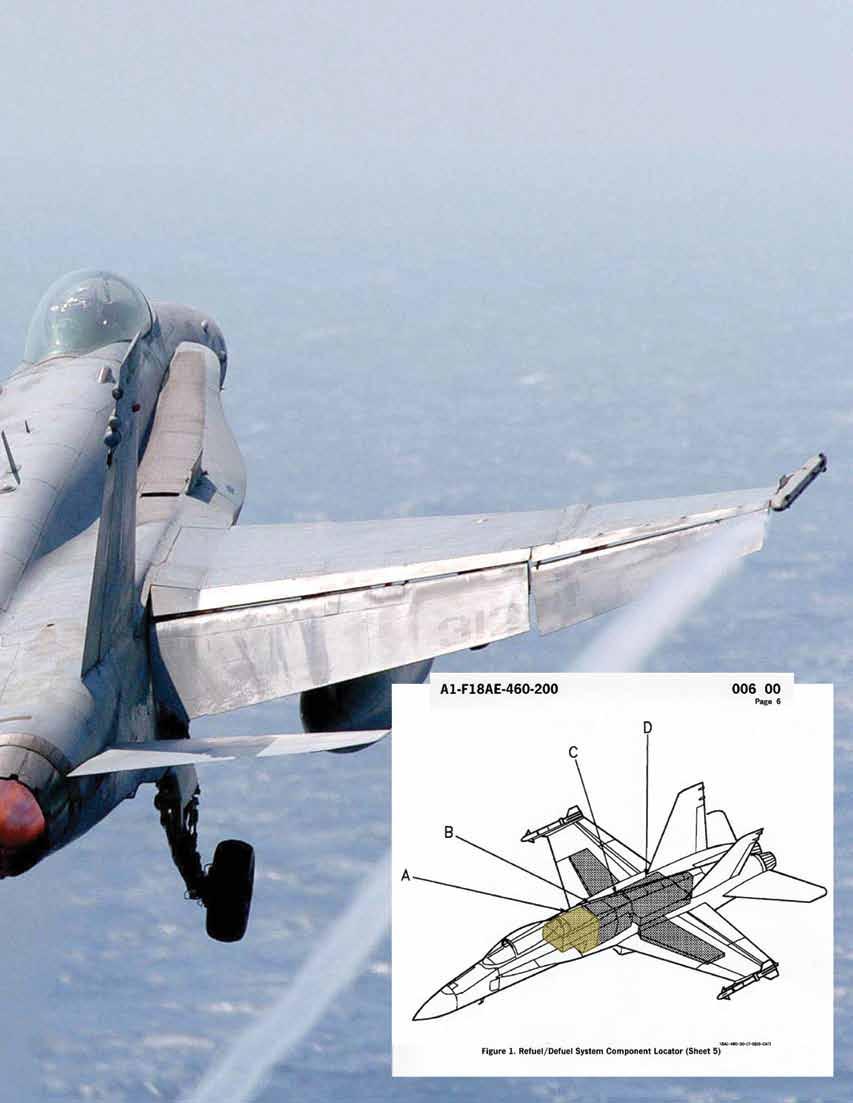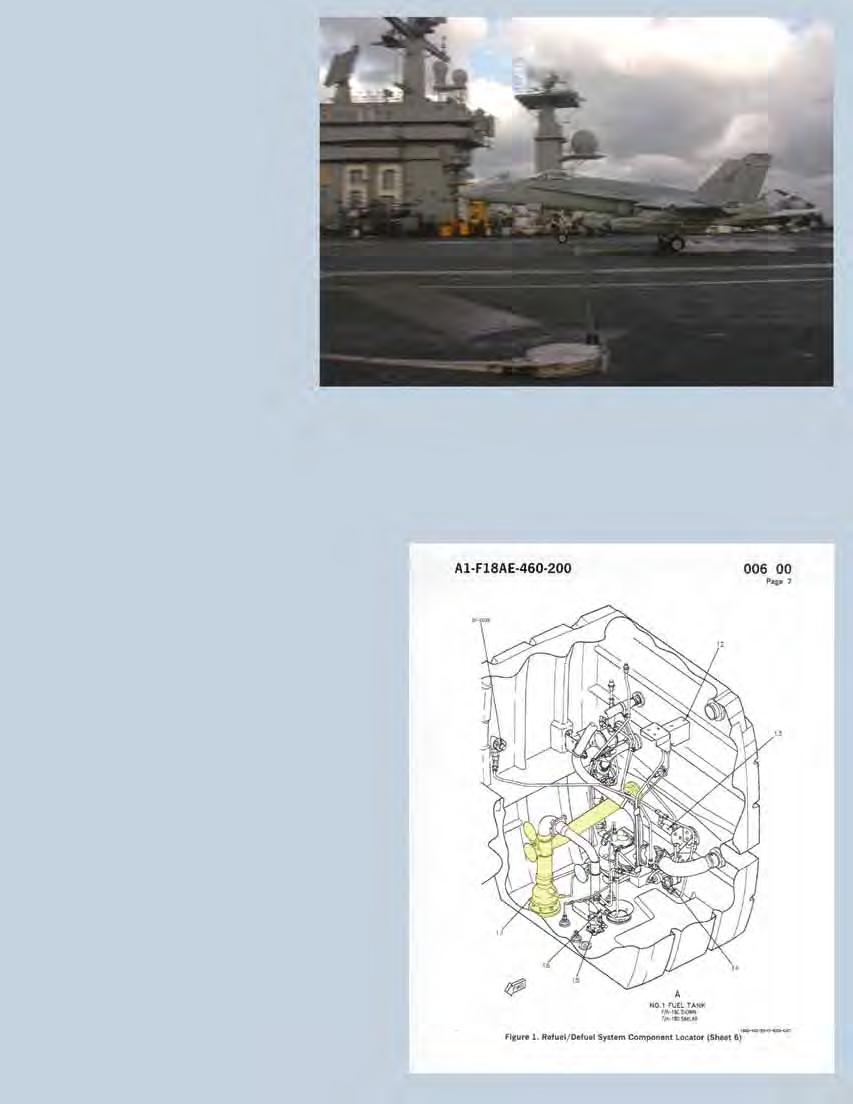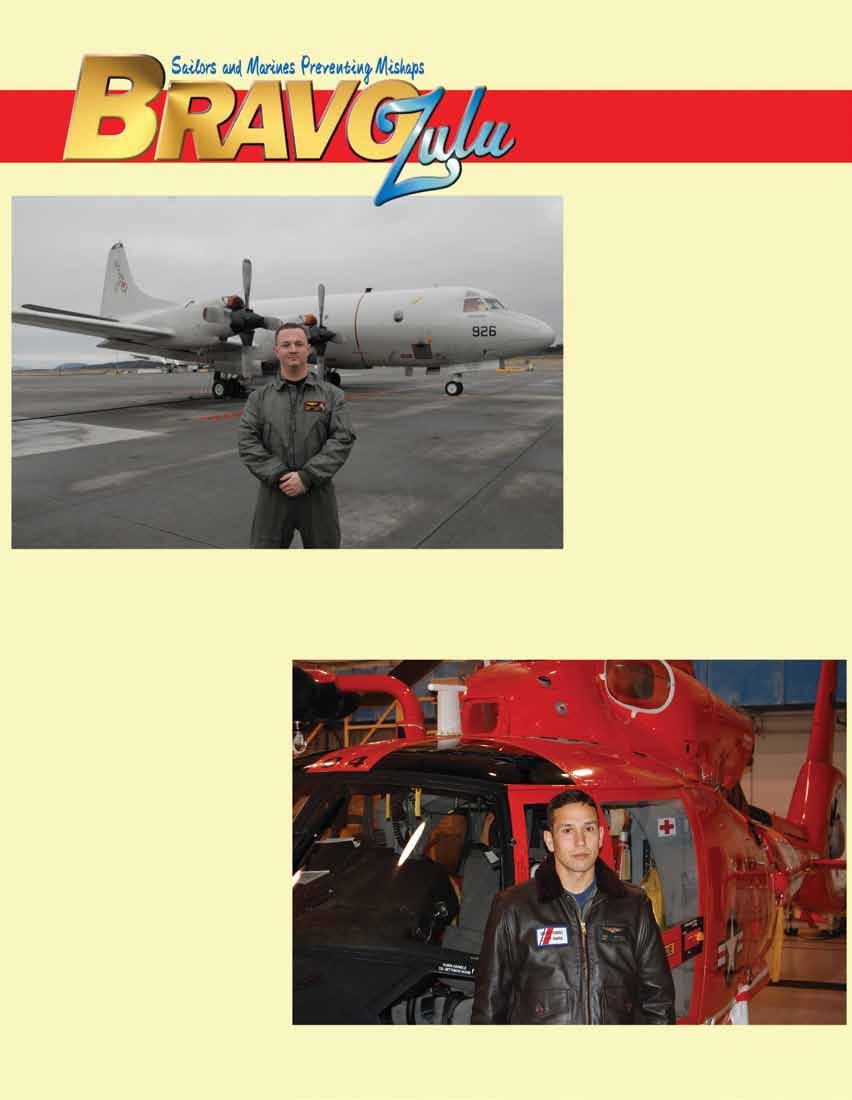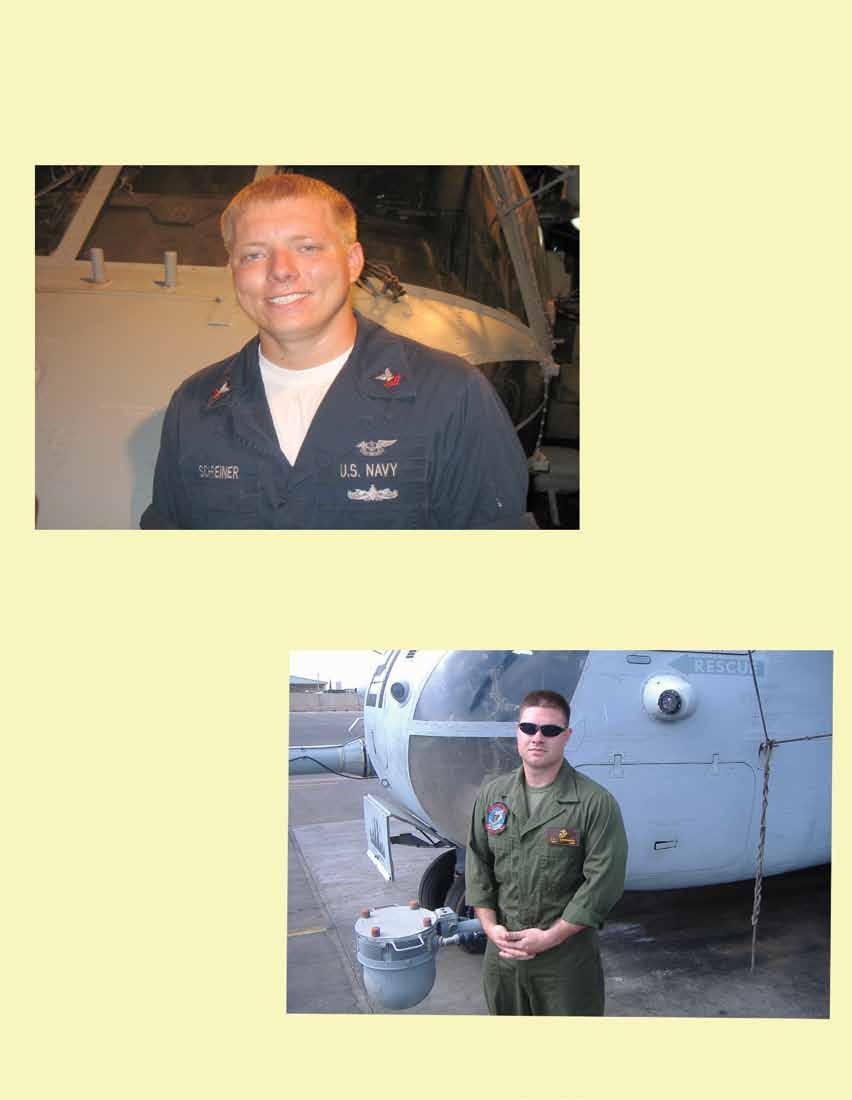
5 minute read
Bravo Zulu
In November, VFA-83 left for a COMPTUEX detachment aboard USS Dwight D. Eisenhower (CVN-69) in preparation for an upcoming deployment. During the first week of the detachment, aircraft 312 started venting fuel after in-flight refueling.
After reviewing the A1-F18AE-460-200 troubleshooting-manual, we decided to run a test to troubleshoot the overfilling vent-tank. The test indicated that the right-wing high-level-pilot-valve and the refuel shut-off valve had failed, causing the wing tank to over-fill the internal cells. After removing and replacing the defective components, we repeated the test. This time, the internal cells did not overfill; we returned the aircraft to service. The next day the aircraft flew two flights with no discrepancies. On the third flight, however, the problem returned. After passing the refuel test a second time, we decided to test the fuel-pressurizationsystem. This test showed that the left-wing motive-flow shut-off valve had failed. After replacing this component and successfully re-testing the system, maintenance returned 312 to service.
Two days later—after several component changes— we still had not identified the gripe’s cause. Our tech reps were just as puzzled.
During our previous deployment, we had faced a similar issue and had developed troubleshooting procedures that will soon be incorporated into the troubleshooting manuals. We decided to apply some of the lessons learned from last deployment to our current head-scratcher of a problem.
First, we dropped the port-side motor to access the vent tank. An inspection of the area revealed that the y-line from the fuel dump was cracked and likely a contributing factor to our ongoing discrepancy. After replacing the automatic drain-valve in the vent tank— and repairing the y-line—we prepared to refuel the aircraft and check our work.
While refueling with electrical power, we noticed cell-4 was not pre-checking. Back into the fuel cell we
went. The automatic drain-valve in cell-4 had failed and was the apparent cause of our pre-check problem. After replacing it, we op-checked and leak checked 312, using both the refuel and transfer pressurization-tests. After successful completion of all, maintenance again returned aircraft 312 to service.
Two days and two flights passed before we got word that 312, again, was venting fuel after an in-flight refueling. The venting did not stop until the external tanks were empty.
This time, the discrepancy had shown us something new: Maintenance-management-panel (MMP) codes had popped for the internal-tank pressure-regulator (ITPR) and for the cell-1 and cell-4 transfer-manifold-groups. After troubleshooting these new codes, we returned to our troublesome aircraft to check our previous work. We found that the MMP-code 486 (tank-one transfermanifold-group) kept setting. No matter what we did, the code would not clear.
We continued troubleshooting with the A1-F18AE-460-200, which led us to change the cell-4 turbine-transfer-pump. Once again, we were back to doing the refuel and pressurization tests, only this time we decided to use a set of clear, acrylic covers (which we had manufactured locally) to see what was happening inside our fuel cells. It turned out to be a great move—the refuel line (shown in yellow) in cell-1 was cracked along every weld. After repairing the line, the renowned 312 again checked good and was returned to service with no further issues.
I learned several lessons. The first, the most important: be patient. Even though we replaced several bad components, it took multiple attempts to fix this discrepancy. This often is the case with the Hornet fuel-system because of its redundant capabilities, which may (and, in this case, did) allow for multiple failures before a cause was found. We followed troubleshooting procedures for isolating the failed components step-by-step and did detect failed components. However, in the end, a simple cracked refuel-line was the final solution to a string of interwoven failures.
The second lesson: Go beyond the published procedures and inspect everything in the area of your work. This applies to more than just fuel systems. If we had inspected the fuel lines the first time we were in the cell, we might have noticed the cracks. If you spend a little extra time examining your working area, you never know what you might find that could end up saving you time and effort.

Petty Officer Koller works in the power-plants shop at VFA-83.
AMT2 David Mitchell CGAS Savannah, GA

After completing a nondestructive inspection (NDI) on an MH-65C nose-landing-gear strut assembly, Petty Officer Mitchell went beyond the required inspection items and visually inspected the strut. He discovered that the port-side strut-attachment bearing had an unusual amount of lateral wear. Mitchell notified QA, who determined that the bearing was out of limits and needed replacing. A discrepancy of this nature could have affected nose-landing-gear extension or retraction, causing an unsafe landing or flight configuration.
Send BZs to: SAFE-Mech@navy.mil
AWF2 Edward Stayton VP-46
Petty Officer Stayton was scheduled to do high-power turns on a P-3C after a maintenance turn-crew finished low-power turns. As the crew wrapped up the low-power turns and secured the engine, Stayton noticed light smoke coming from the No. 4 engine. He notified the Maintenance Control CPO, who ordered an inspection of the engine. The inspection revealed that the igniter plugs had not been installed correctly. Highpower turns with the igniter plug discrepancy could have led to catastrophic engine failure and airframe damage.
SSgt. Eric Groenendaal HMH-366 HOA Det.

Staff Sergeant Groenendaal’s attention to detail during a daily inspection revealed a damaged bushing in a collective flight-control bell-crank mount. Groenendaal knew something was wrong when he found only a small amount of wear grease accumulating under the mount. Examining more closly, he found that the main bell-crank mount bolt was worn close to the point of failure. Groenendaal informed Maintenance Control and initiated a MAF to correct the problem.
AT2 Kenny Schreiner HSL-49 Det. 5
While doing a daily inspection of Red Stinger 111, Petty Officer Schreiner noticed excessive wear on the mainrotor hub-liner. Going beyond the required items of the daily, he conducted a more in-depth examination of the area and found that the rotor-blade centering-socket was broken in half, causing extensive gouging of the elastomeric bearing. Petty Officer Schreiner’s actions prevented a possible failure of the main-rotor-head assembly.










